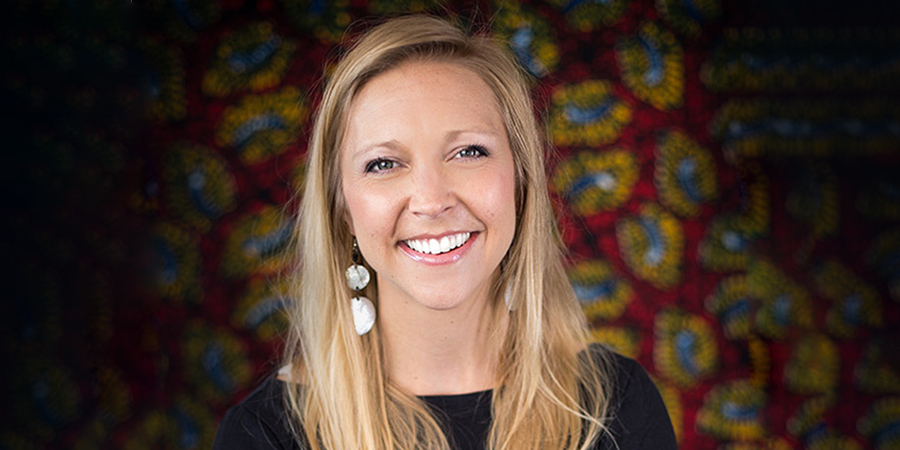A new GSMA report titled ‘State of the Industry Report on Mobile Money 2025’ revealed that the mobile money industry achieved significant milestones, surpassing two billion registered accounts and over 500 million active monthly users worldwide in 2024. After taking 18 years to reach its first billion accounts, the industry doubled in just five years. This momentum extended to transaction activity, with mobile money platforms processing around 108 billion transactions worth more than USD 1.68 trillion, marking year-on-year growth of 20% in volume and 16% in value.
In an exclusive interview with Telecom Review Asia, Ashley Olson Onyango, Head of Financial Inclusion and AgriTech at the GSMA, unpacked the key findings of this report.
Onyango shared global insights and regional highlights, including East Asia-Pacific’s impressive growth in active mobile money accounts, the evolving role of partnerships with banks and global payment networks, and ongoing efforts to close the gender gap in financial inclusion.
What key global insights or trends does this year’s report reveal about the mobile money ecosystem?
More than half a billion monthly active users and over 2 billion registered accounts is a remarkable achievement. We're seeing strong growth globally, with values growing by 16% and volumes by 20%. This is driven by a 20% increase in agent registration and more ecosystem transactions, such as bill payments, merchant payments, and international remittances.
East Asia-Pacific recorded the second-fastest growth in active mobile money accounts globally in 2024. What factors are driving this growth?
We saw strong growth in East Asia and the Pacific and South Asia. It’s notable that, in this region, active usage is growing faster than registered usage. That’s what we want to see globally—people using accounts more often. A lot of this is led by enabling regulatory environments and a real focus from regulators and providers on financial inclusion.
In East Asia and the Pacific, international remittances grew by 39%, while merchant payments grew by 37%. These use cases are highly relevant, and once people start using them more frequently, they expand into other use cases. The usability and relevance are really strong, and both providers and regulators have done a great job supporting this.
How has the mobile money landscape evolved across Southeast Asia and what are the main challenges and opportunities in this region?
Digital financial literacy remains a barrier. People’s skill sets and comfort with using digital financial services are still limiting factors. This plays into the gender gap, which is fascinating in South Asia. Countries like Indonesia and the Philippines have a negative gender gap—more women own mobile money accounts than men. In markets like Pakistan, the gender gap in mobile money usage is particularly high – women are 70% less likely than men to have a mobile money account. Similarly, in Bangladesh and India, the gap remains significant, with women being over 50% less likely to own mobile money accounts. Driving mobile phone ownership, mobile money awareness, and digital literacy skills remain significant and ongoing challenges. South Asia presents a complex landscape, home to both some of the earliest and some of the newest mobile money services so the context varies drastically. That lends itself to looking to neighboring markets for innovation and ideas.
With the gender gap still an issue, how is the GSMA working to close it, and are there regional differences in how it’s being addressed?
We work with our members and mobile money providers globally through our GSMA Connected Women Commitment initiative. Launched in 2016, it’s about reducing the gender gap in both mobile internet usage and mobile money services. We partner with mobile network operators (MNOs) who commit to supporting our initiative. Then we work with them based on their market and data to find solutions to drive greater inclusion of women. It’s not off-the-shelf; it’s very bespoke. Some of our key partners in Asia include Dialog Axiata in Sri Lanka, Digital Communications in Malaysia, Indosat in Indonesia, and Robi Axiata in Bangladesh.
How do partnerships between mobile money operators and traditional financial institutions shape the future of mobile money, particularly in Asia?
Partnerships between mobile money providers and banks are critical. Mobile-to-bank and bank-to-mobile transaction volumes have increased drastically. These partnerships unlock new financial products, such as credit scoring, debit cards, and digital loans. In Vietnam and the Philippines, we’ve seen mobile bank transfers and offline interoperable services expand users’ ability to transact across platforms. There’s also growing alignment with global payments networks like Mastercard and Visa. These partnerships support the launch of virtual and physical debit cards and help open remittance gateways. They’re critical to growing the industry and making it relevant and usable for consumers.
How has your experience shaped your vision for the future of mobile money and technology in these sectors?
I’m American, and I moved to Kenya in 2010 when M-PESA was in its early stages. I saw how it changed the way we transact—how seamless and usable it was. I watched M-PESA grow and mature over a decade. It opened up the possibility for mobile money to serve unbanked and underserved users. Seeing that evolution, and looking at markets like South Asia, where there’s so much innovation, I see vast opportunity to connect people who aren’t part of the financial services space and provide them with basic tools. At the same time, we can serve more mature users who want digital loans and products that support their lives. Helping users take that journey through the mobile money industry is fascinating.
Also Read:
GSMA Report Highlights Barriers to Mobile Internet Adoption
GSMA, VDCA to Accelerate Vietnam's Digital Transformation
Globe Backs GSMAi Green Network Sustainability Push






